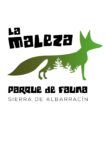La Maleza
Natural grazing in Albarracín mountains
Natural grazing was for centuries a key process in shaping European landscapes. Historical aggregation levels of herbivores are currently missing due to land use changes and exploitation (such as hunting) resulting in some species reaching the brink of extinction. With free ranging herbivores disappearing from Europe’s natural landscapes and replaced by growing levels of livestock farming, areas changed both in appearance and natural dynamics and processes. However, the ongoing trend of land abandonment in many regions of Europe is growing interest to bring back free roaming and wild-living large herbivores to natural European landscapes.
Due to land abandonment, Albarracín mountains, and all the Iberian Chain, in Spain, has seen the disappearance of the livestock that grazed the landscape for centuries. The recent absence of large grazers is transforming the region; open areas slowly disappear and the risk of big wildfires increases.
In this context, a group of entities and local authorities has partnered to start natural grazing and the recovery of the large herbivores. In the first phase, a herd of Tauros has been brought to 1,000 hectares of communal land in the municipality of Frías de Albarracín, a Natura 2000 site. The plan is to continue with the enlargement of the grazing area and the transport of horses, in order to diversify grazing. Free-roaming grazers can enhance biodiversity by opening up landscapes and preventing encroachment by shrubs. They can act as natural “fire brigades” by removing vegetation that fuels wildfires. These animals will play a vital natural grazing role in rewilding of this area. Furthermore, natural grazing can also have a positive impact on carbon storage and climate change resilience.
Secured 500 hectares of the municipalities of Frías de Albarracín and Calomarde, and the Comarca de Albarracín for natural grazing pilot site.
Signed contract with Stichting Taurus Foundation from Netherlands.
Establishment of the first grazing herd with twenty individuals.
Nature based tourism offers developed including guided tours.
The effects of large grazers on landscapes and biodiversity.
Preparation of sites and site sustainability, organizing transport and how tor cope with all necessary logistics in Spain.
Educational practices.

Natural grazing was for centuries a key process in shaping European landscapes. Historical aggregation levels of herbivores are currently missing due to land use changes and exploitation (such as hunting) resulting in some species reaching the brink of extinction. With free ranging herbivores disappearing from Europe’s natural landscapes and replaced by growing levels of livestock farming, areas changed both in appearance and natural dynamics and processes. However, the ongoing trend of land abandonment in many regions of Europe is growing interest to bring back free roaming and wild-living large herbivores to natural European landscapes.
Due to land abandonment, Albarracín mountains, and all the Iberian Chain, in Spain, has seen the disappearance of the livestock that grazed the landscape for centuries. The recent absence of large grazers is transforming the region; open areas slowly disappear and the risk of big wildfires increases.
In this context, a group of entities and local authorities has partnered to start natural grazing and the recovery of the large herbivores. In the first phase, a herd of Tauros has been brought to 1,000 hectares of communal land in the municipality of Frías de Albarracín, a Natura 2000 site. The plan is to continue with the enlargement of the grazing area and the transport of horses, in order to diversify grazing. Free-roaming grazers can enhance biodiversity by opening up landscapes and preventing encroachment by shrubs. They can act as natural “fire brigades” by removing vegetation that fuels wildfires. These animals will play a vital natural grazing role in rewilding of this area. Furthermore, natural grazing can also have a positive impact on carbon storage and climate change resilience.

Secured 500 hectares of the municipalities of Frías de Albarracín and Calomarde, and the Comarca de Albarracín for natural grazing pilot site.
Signed contract with Stichting Taurus Foundation from Netherlands.
Establishment of the first grazing herd with twenty individuals.
Nature based tourism offers developed including guided tours.


